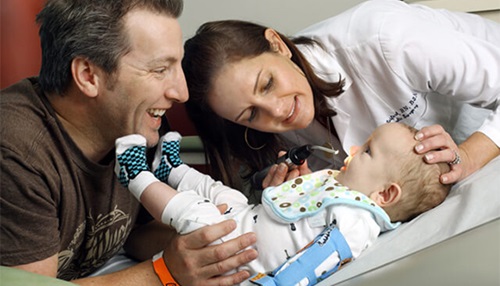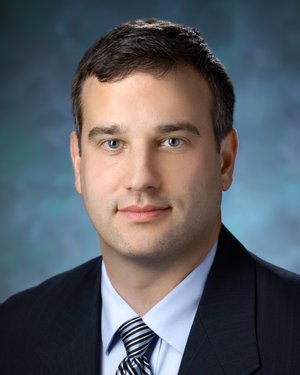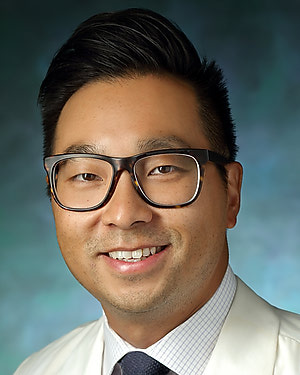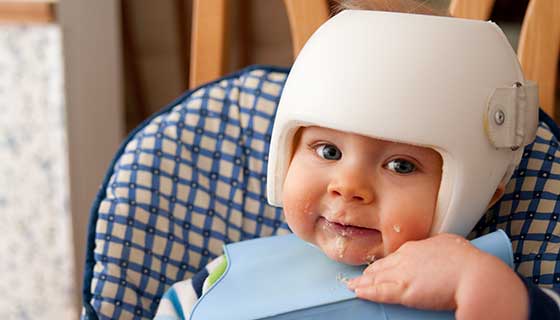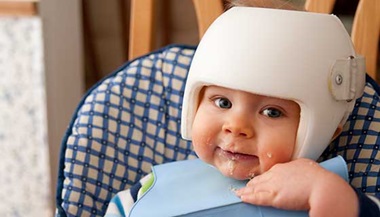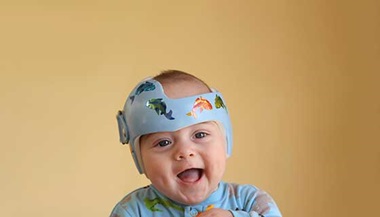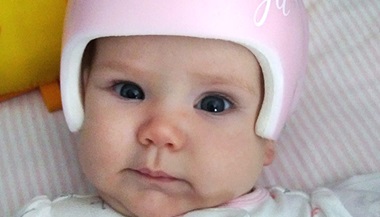Pediatric Craniosynostosis Surgery: What You Should Know
Featured Experts:
A newborn’s skull consists of several plates of soft bone that are mobile, allowing passage through the birth canal when babies are born. These bones will eventually fuse together as he or she grows. In pediatric craniosynostosis, an infant’s skull bones fuse too early, which can restrict brain growth and result in an abnormal head shape. This abnormal shape is often how parents are first alerted to something amiss.
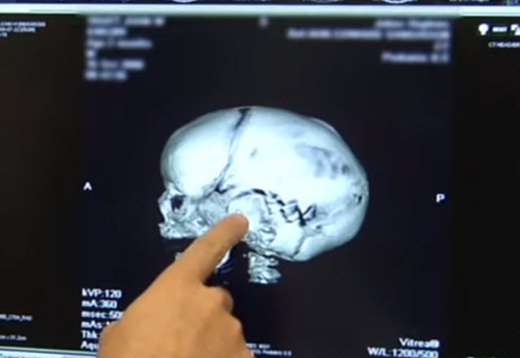
Craniosynostosis is often diagnosed in very young infants, and doctors may recommend surgery. It’s natural to feel anxiety about surgery for a small baby, however, surgery for craniosynostosis is highly successful.
Johns Hopkins pediatric neurosurgeons and plastic surgeons have seen the effects of successful craniosynostosis treatment: happy, healthy children and then teenagers, with only a hidden scalp scar remaining from the surgery in infancy.
Pediatric Craniosynostosis Surgery: Traditional Approach
Your doctor will be able to discuss treatment specifics that apply to your child. One treatment method your doctor may recommend is traditional open surgery, referred to as cranial vault remodeling.
Cranial vault remodeling: This is the surgical approach that doctors have relied on for decades to treat craniosynostosis. This is typically performed for babies 5-6 months of age or older.
In this surgery, a team of doctors:.
- Makes an incision along a baby’s scalp.
- Removes the affected bone.
- Reshapes and replaces the bone to allow for improved overall head shape and increased space for the developing brain.
Pediatric Craniosynostosis Surgery: Minimally Invasive Approach
As an alternative, Johns Hopkins surgeons may offer a minimally invasive approach to surgery called endoscopic craniectomy.
Endoscopic craniectomy: This approach is offered for babies up to 3 months of age, when their skull bones are still soft and bone regrowth is very rapid. During this surgery, doctors:
- Make small incisions in a baby’s scalp.
- Use an endoscope, a thin tube with a light, to see the inside of the scalp.
- Remove the affected bone.
- Guide remaining skull growth with a molding helmet.
After an endoscopic surgery, your child will need to wear a cranial orthotic helmet for a period of time. This helps to mold the head into a normal shape as it continues to grow.
Craniosynostosis: Fitz’s Story
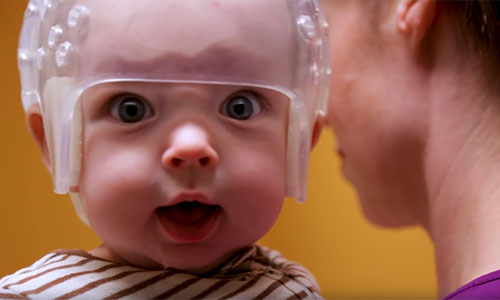
When Fitz was born, it was obvious that his skull was misshapen. By 5 weeks old, Fitz had been diagnosed with craniosynostosis. His skull had fused early and was constricting his brain growth.
Craniosynostosis Surgery: Traditional Versus Endoscopic
All centers still offer traditional surgery, particularly for babies who are diagnosed at later ages or babies who have particular types of craniosynostosis with more extensive deformities.
The surgery is immensely safer than it was in previous decades, but it is a longer overall procedure — it can take six hours. Babies are often in the intensive care unit for the first 24 hours after surgery so the team can monitor them carefully. Another two to three days in the hospital’s pediatric unit is normal after this surgery.
In comparison, the endoscopic procedure, performed on babies 3 months old or younger, shows good results with potentially fewer risks, including:
- Less blood loss during surgery
- A shorter hospital stay (usually one night)
- Smaller incisions
Your doctor can help you determine which treatment is best for your child.
The Johns Hopkins Cleft and Craniofacial Center
